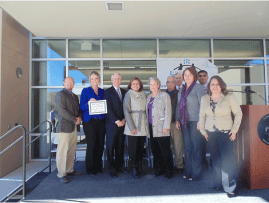Planned Potash Mine has 50 Year Life Span
1 Jan 2014
Carlsbad, NM, January 2014 - A planned potash mine in southeastern New Mexico would be economically viable for the next 50 years, according to a new study by a consulting group.
Intercontinental Potash Corporation recently released the study just before the company's Ochoa potash project breaks ground and the company await a final approval from federal officials.
The polyhalite mine, located 27 miles west of Jal, has an estimated 414 million tons of polyhalite reserves beneath the 40 sections of land the company has leased from the Bureau of Land Management.
The independent study showed the mine could produce about 714,400 tons of sulphate of potash per year for a minimum of 50 years.
The study was led by SNC-Lavalin — an engineering and mining project consulting group — and recommended that Intercontinental Potash Corporation move forward with the project.
"We are pleased with the technical validation of the mining and processing design, and the resulting economic characteristics," Sidney Himmel, ICP president and chief executive, said in a statement. "The Ochoa Project positions ICP to become a world leader in SOP production and a bottom quartile cost SOP producer."
With the feasibility study complete all that remains before construction can begin is the release of the final environmental impact statement from the BLM and issuance of approval for construction. The final environmental impact statement is expected to be released in the first quarter of 2014 and consisted of more than two years of a study on issues including water resources, cultural resources, natural resources, air quality and other resources.
Intercontinental Potash Corporation officials say they feel confident about the project following the consultant's study.
"The study itself validates that the project is economically viable," said Randy Foote, the company's chief operating officer. "From here we have to move on to find people to invest in this good project."
The study showed that full production of the estimated 714,400 tons per year, the product mix is projected to be 229,400 tons of standard SOP, 385,000 tons of granular SOP and 100,000 tons of soluble SOP. Standard, granular and soluble are the relevant grades of SOP.
More Topics



